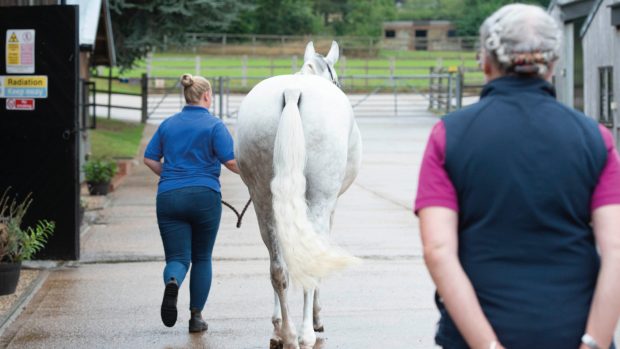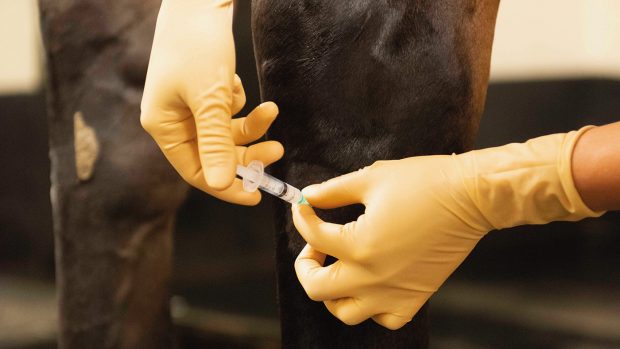Read more about lameness in horses
Find an equine vet
Direct trauma injuries
The most common cause of shoulder lameness in adult horses is a traumatic accident — a fall or a collision, for example.
The front of the lower end of the scapula, called the supraglenoid tubercle, is at particular risk of fracturing because it is relatively poorly protected by overlying soft tissues.
Moreover, the scapula develops from several pieces of bone which fuse together early in the horse’s life, but the fusion lines remain weak points and fractures of the supraglenoid tubercle usually occur here.
The strong biceps brachii muscle, which attaches to the supraglenoid tubercle via its tendon and pulls downwards and forwards, can often displace the fracture as a result of its action.
Although initial lameness is often severe, it normally improves quite quickly, which can lead horse owners to think — wrongly — that the injury is less severe than first thought.
On the inside of the shoulder is a web of nerves, called the brachial plexus. These nerves are responsible for supplying all the muscles of the forelimb.
Damage to specific nerves can alter a horse’s ability to control the movement of the shoulder. This can occur if a horse collides with either a solid object or with another horse, resulting in the nerves being stretched.
If the muscles on the inside of the shoulder do not function properly due to nerve damage
as the horse bears weight on the limb, the shoulder will bulge outwards.
This is called shoulder slip and is best appreciated by seeing the horse walking towards you. The foot of the affected limb will often rotate, causing the toe to point inwards and the heel outwards.
This is not a pain-related condition, although at the time of acute injury, bruising and pain may contribute to lameness.
This gait abnormality reflects a lack of normal muscular control. If the nerve damage is not severe the horse may make a progressive and complete recovery, but if it’s more serious the clinical signs may persist long term.
For the full veterinary article on shoulder lameness, see the current issue of Horse & Hound (26 May, 2011)
Find out more about lameness in horses
Looking for an equine vet?



